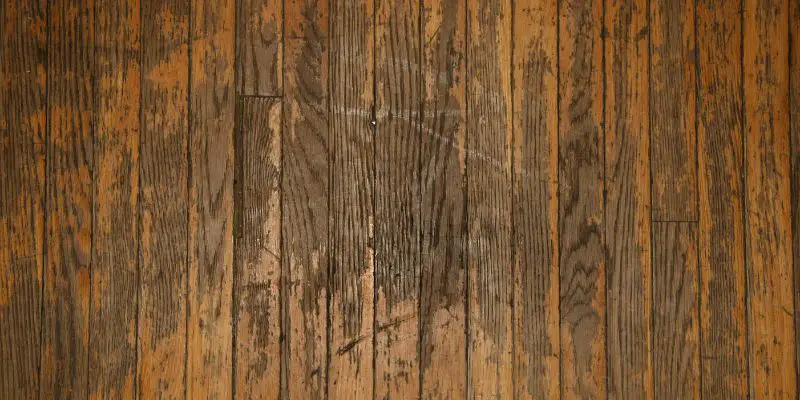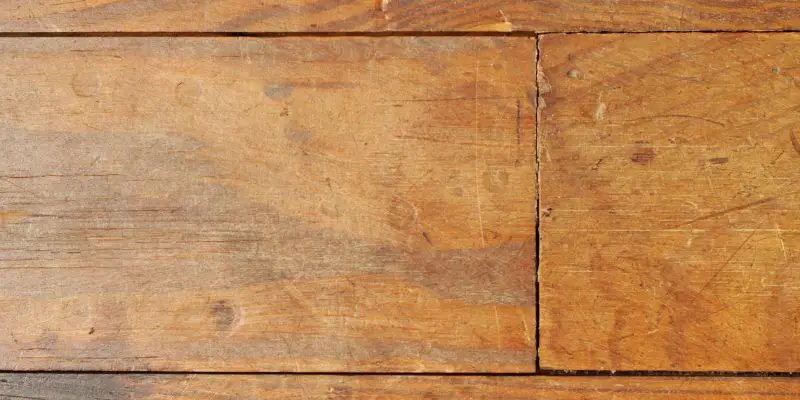To remove urine stains from hardwood floors, gently wipe the affected area with a mixture of vinegar and warm water. Urine stains on hardwood floors can be unsightly and challenging to remove.
However, with the right approach, you can effectively eliminate these stains. One effective method is to create a solution by combining equal parts vinegar and warm water. By gently wiping the stained area with this mixture, you can break down the urine and eliminate the odor.
Remember to use a soft cloth or sponge to avoid scratching the floor. In addition, ensure that the area is thoroughly dried to prevent water damage. With these simple steps, you can remove urine stains and restore the beauty of your hardwood floors.
Understanding Urine Stains On Hardwood Floors
In this section, we will delve into the topic of understanding urine stains on hardwood floors. Urine stains can be a common issue in households, especially those with pets or young children. Knowing the causes and types of urine stains can help you effectively remove them and keep your hardwood floors looking clean and pristine. Let’s explore each aspect in detail.
Causes Of Urine Stains On Hardwood Floors
Understanding the causes of urine stains is crucial to prevent future occurrences. Here are the main factors:
- Pets: Having pets that occasionally have accidents indoors can lead to urine stains on hardwood floors.
- Potty training accidents: When potty training children, accidents can happen, and if not cleaned properly, urine stains may develop on the hardwood floors.
- Issues with pets’ urinary tract: Medical conditions or urinary tract infections in pets can cause them to have accidents indoors, resulting in urine stains on the floors.

Types Of Urine Stains On Hardwood Floors
Urine stains on hardwood floors can vary in nature, depending on different factors. These are the most common types:
| Type | Description |
|---|---|
| Fresh stains | Urine stains that are recent and haven’t had time to fully set into the wood. |
| Old stains | Urine stains that have been left unattended for a while, making them more challenging to remove. |
| Prolonged exposure stains | Stains that have been present on the hardwood floors for an extended period, causing darkening and discoloration. |
| Surface stains | Urine stains that are only on the surface of the wood and haven’t penetrated into the deeper layers. |
| Penetrated stains | Stains that have seeped into the wood, making them more stubborn and challenging to remove. |
By understanding the causes and types of urine stains on hardwood floors, you can take appropriate measures to effectively remove them and restore the beauty of your floors. In the next section, we will guide you on the step-by-step process of removing urine stains from hardwood floors.

Preventive Measures To Avoid Urine Stains
To prevent urine stains on hardwood floors, it is important to act quickly and follow these preventive measures. Clean up any spills immediately, use enzymatic cleaners specifically designed for removing pet stains, and consider applying a protective sealant to your floors.
Regular maintenance and prompt attention can help avoid unsightly and stubborn stains on your hardwood floors.
Preventive Measures to Avoid Urine Stains
Taking preventive measures is key to maintaining the beauty and integrity of your hardwood floors. By implementing a few simple steps, you can mitigate the chances of urine stains and keep your floors looking pristine. In this section, we will discuss two essential preventive measures: proper pet training and bathroom habits, as well as protective coatings for hardwood floors.
Proper Pet Training and Bathroom Habits The foundation of preventing urine stains on hardwood floors starts with proper pet training and encouraging good bathroom habits. Whether you have a new puppy or an older dog, consistent and positive reinforcement is crucial. Here are some tips to consider: Establish a Routine: Dogs thrive on routine, so establish a consistent schedule for bathroom breaks. Regularly taking your pet outside or providing access to a designated bathroom area can help reduce accidents on your hardwood floors.
– Positive Reinforcement: When accidents do occur, avoid scolding or punishment as this can create fear or anxiety in your pet and may not effectively address the issue. Instead, focus on positive reinforcement techniques, such as praising and rewarding your pet when they go to the bathroom in the appropriate area.
– Frequent Bathroom Breaks: Especially for puppies or dogs with smaller bladders, frequent bathroom breaks are essential to avoid accidents. Take your dog out more frequently, particularly after meals, playtime, or long periods of rest. This will help reduce the chances of accidents happening on your hardwood floors.
Protective Coatings for Hardwood Floors Applying protective coatings to your hardwood floors can create an additional barrier against urine stains and damage. These coatings act as a shield, providing an extra layer of protection. Here are a few options to consider: Polyurethane Coatings: Polyurethane coatings are popular choices for protecting hardwood floors. They offer excellent resistance to stains and liquids, including urine. These coatings create a durable surface that is easier to clean and maintain.
– Water-Based Sealers: Water-based sealers are another viable option to safeguard your hardwood floors. These sealers are designed to penetrate the wood, forming a protective barrier that helps prevent urine from seeping into the floorboards. They are also environmentally friendly and typically have low volatile organic compound (VOC) emissions.
– Wax Coatings: Wax coatings provide a natural protective layer that resists urine stains and adds a beautiful sheen to your hardwood floors. While wax coatings require more frequent maintenance compared to other options, they can be an effective choice when used properly.
Incorporating these preventive measures, such as proper pet training and bathroom habits, along with the application of protective coatings, can significantly reduce the risk of urine stains on your hardwood floors. By taking proactive steps to prevent accidents and implement additional layers of protection, you can enjoy the beauty and longevity of your floors for years to come.
Effective Techniques For Removing Urine Stains
Accidents happen, especially if you have pets or young children at home. When it comes to hardwood floors, urine stains can be a real hassle to deal with. Not only can they leave unsightly marks, but they can also cause unpleasant odors and potentially damage the wood if not properly addressed. Luckily, there are several effective techniques you can employ to remove urine stains from hardwood floors. In this post, we will explore these techniques in detail and provide you with simple yet efficient solutions to tackle this problem.
Blotting And Absorbing Urine
When you discover a urine stain on your hardwood floor, it’s important to act promptly to prevent further damage. The first step is to blot the urine as soon as possible. Grab a clean cloth or paper towel and gently press it onto the stain to absorb as much moisture as you can. Remember to avoid rubbing the stain, as this can spread the urine and make it harder to remove.
Once you’ve blotted the urine, it’s time to tackle the remaining residue. One effective technique is to create a mixture of equal parts water and vinegar. Lightly dampen a clean cloth with this solution and gently wipe the stained area. Vinegar has natural deodorizing and sanitizing properties, making it a great solution for eliminating urine odors and bacteria.
If your hardwood floor features a deep-grain texture, you may need to use a soft nylon brush to reach and clean the crevices effectively. Remember to work with the grain of the wood to avoid causing any damage. After scrubbing the stain, use a clean, dry cloth to wipe away any excess moisture and let the floor air dry completely.
Using Natural Cleaning Solutions
If you prefer using natural cleaning solutions, there are a few effective options available. Baking soda, for instance, is a versatile household ingredient that can help absorb urine odors from hardwood floors. Simply sprinkle a generous amount of baking soda onto the stained area and allow it to sit for several hours. Then, using a soft cloth or vacuum cleaner, remove the baking soda. Repeat this process if necessary, and you’ll notice a significant improvement in the odor.
Another natural solution is hydrogen peroxide. This powerful disinfectant can help remove urine stains effectively. However, it’s essential to use caution and perform a spot test first, as hydrogen peroxide has bleaching properties that may affect the color of your hardwood floor. If the test shows no adverse effects, dip a cloth in hydrogen peroxide and gently scrub the stained area. Once the stain has faded, wipe away any excess liquid with a clean cloth and allow the floor to dry.
Utilizing Commercial Stain Removers
If you prefer a ready-made solution, there are commercial stain removers specifically designed for hardwood floors. These products often contain enzymes that break down the urine and eliminate its odor. Before using any commercial cleaner, always read and follow the instructions provided by the manufacturer.
To remove urine stains using a commercial stain remover, start by applying the product directly to the stain. Allow it to sit for the recommended amount of time, typically a few minutes. Next, use a clean cloth or mop to scrub the stain gently. Finally, wipe away any residue and excess moisture, and let the floor air dry.
When dealing with urine stains on hardwood floors, quick action and the right techniques are essential for successful removal. Whether you choose to blot and absorb the urine, use natural cleaning solutions, or opt for a commercial stain remover, these effective techniques will help you restore the beauty and cleanliness of your hardwood floors. Remember to always test any cleaning solution in an inconspicuous area first and take proper precautions to protect the integrity of your floors.
Conclusion
To sum up, removing urine stains from hardwood floors requires a combination of timely action and effective cleaning methods. By following the steps mentioned in this blog post, you can successfully eradicate urine stains and prevent any lasting damage to your flooring.
Remember to act quickly, use gentle cleaning solutions, and test on a small area first. With proper care, you can maintain the beauty and longevity of your hardwood floors for years to come.



7 thoughts on “How Do You Remove Urine Stains from Hardwood Floors: Expert Tips and Tricks”